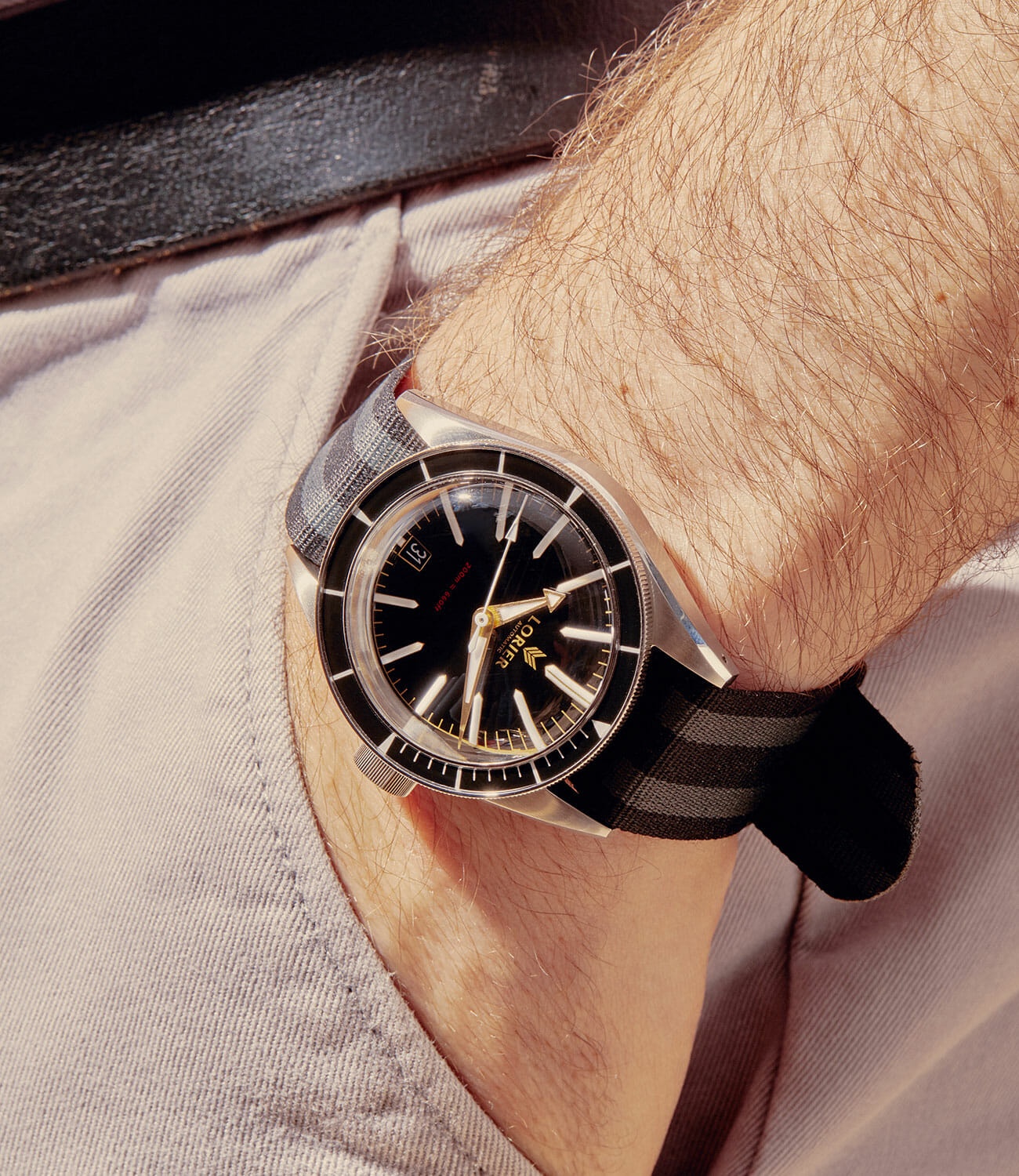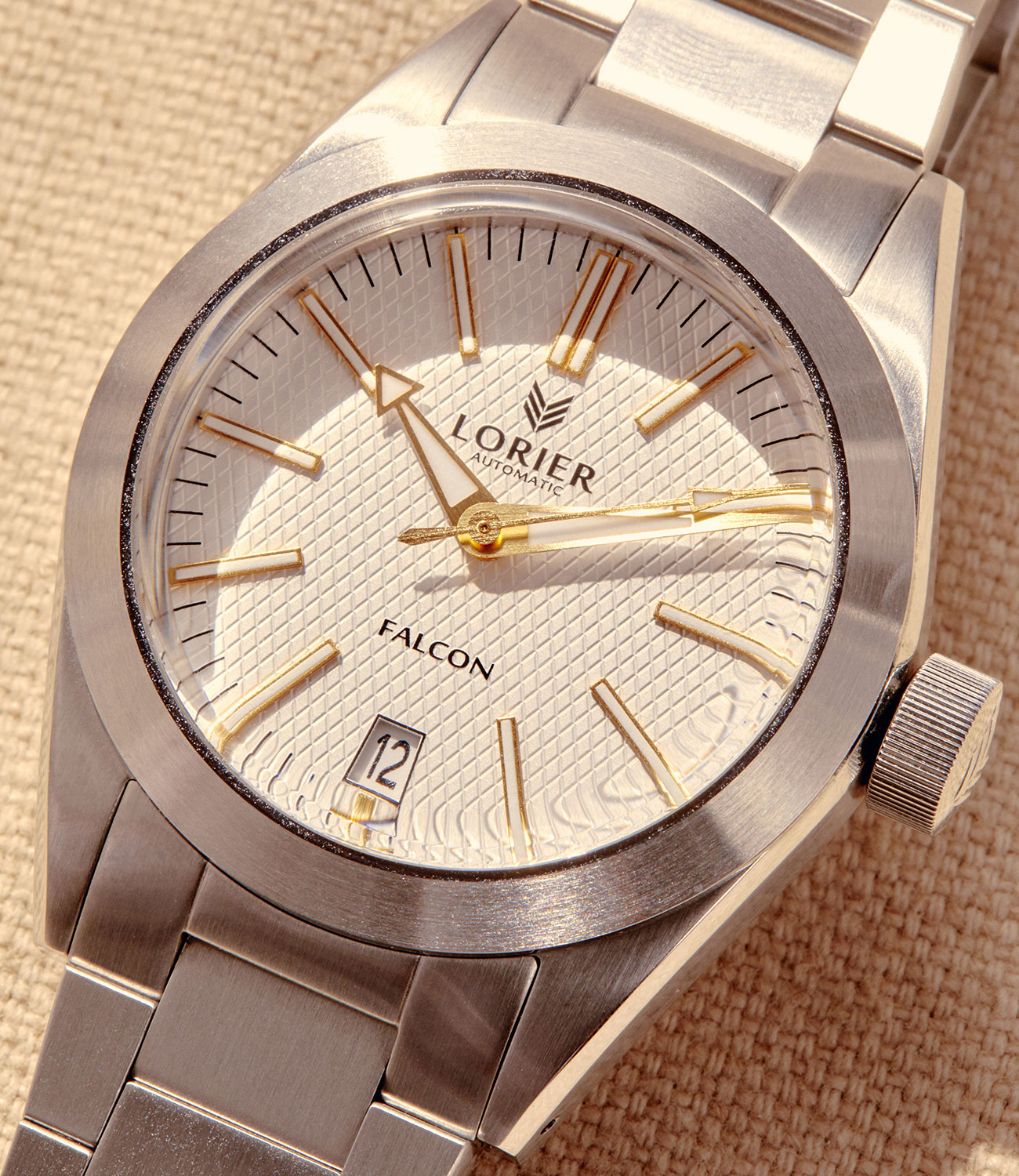“Mechanical Watches for Under $500″ — now that’s a headline that catches your attention. “How is it possible, who’s making them, or where could I buy one?” Natural follow up questions.
Let’s start with “who” — Lorier is an up-and-coming New York City-based boutique watch company making affordable mechanical watches. Husband and wife duo Lorenzo and Lauren Ortega are the masterminds behind Lorier, and we had the pleasure of sitting down with them to learn a bit more about what inspired the brand, and just how they’re making these accessible, mechanical timepieces.
Interview

Vero eos et accusamus et iusto odio dignissimos ducimus qui blanditiis praesentium voluptatum deleniti atque corrupti quos dolores et quas molesti Photo by John Doe.
Q: With no prior watchmaking experience, what sparked you all to take the bold leap of starting your own watch company?
A: We wanted to make something for people like us. Watches today are mostly made to be status symbols or collector’s items (and they’re priced accordingly). We were public school teachers, so watches could never really fill that role, nor did we want them to. For us, they’re wonderful objects that, just by virtue of being worn every day, can come to represent so much more: memories, histories, personalities.
What brought this from the back of our minds into reality was Lorenzo’s dress watch flooding in the shower on the way to a wedding. His other watch was a Seiko diver, which was a little too casual for the occasion. When we got home, he started to look for something he could actually wear every day, everywhere, and with anything. It had to be handsome while being rugged and low-maintenance. It also had to be affordable – we were on a teacher’s budget, and we were just uncomfortable wearing something worth thousands on our wrists. We couldn’t find anything that met our criteria.
We’d already spent years dreaming about what our ideal watch might look like (as most watch nerds do), and the time felt right to actually make it. It was summer, so we had plenty of time to research and plan. We’d finished paying off our student loans and finally had some money saved. The more our designs came together, the more we were convinced we had to go all-in on our idea.

It was a huge gamble for us; we literally bet everything we had on it! There were times when it really felt crazy: in the first year, we were teaching during the day and coming home to work on the business at night. But we had that much faith in each other, and we knew there were other people who felt the same way about watches as we do, looking for the same thing we were.
Q: As a husband-wife team, how do you divide and conquer the responsibilities of the business?
A: We do as much as we can ourselves to keep prices as low as possible: design, quality control, photography, building and maintaining the website, customer service, order fulfillment. Larger companies would have separate people or departments for each of those areas, but for us, those separate departments are all compartmentalized in our heads! It’s a challenge, but we’re happy to do it. We’re both uncompromising in our vision and expectations, so we see it as an advantage to have as much control as we do.
We’ve been together for a decade now, which is the majority of our adulthood and a third of our lives. We’re fortunate to know each other well enough to understand our strengths and be upfront about what we’d rather not do. As business has picked up and there are more demands on our time, we’ve learned that we need to be intentional about conserving our mental and emotional energy. Each of us has areas that stress us out the least, and those are the centers from which we operate. Lorenzo’s happy place is design, and he prefers to avoid dealing with money and numbers. Lauren finds comfort and order in daily operations and doesn’t have the patience needed for photography. But there really aren’t any hard lines. We each provide input and help each other with every aspect of the business.
Q: How did you decide on the name Lorier for your brand and subsequently the names Neptune, Hydra, and Falcon for the current models in your catalog?
A: We wanted a name that would have personal significance as well as connect to something greater. “Lorier” is actually an Old French word for “laurel,” which is the root of both our first names. It’s also a nod to Lorenzo’s formative years spent speaking French in Geneva, Switzerland. In terms of universal significance, there are values associated with the laurel – honor, excellence, and victory.
The names for our models come from the spirit we want them to evoke. Our flagship diver is brimming with references to the golden age of watch design, so we couldn’t think of a more fitting name than Neptune. Referencing mythology draws on this idea of being time-tested, lasting, and classic. As god of the sea, Neptune conjures up images of the ocean and its power – perfect for the quintessential diver.
The Hydra is more aggressively designed and has more complications (the date, the multi-functional bezel markers), so it made sense to reference the mythical, multi-headed sea monster. There’s also the double meaning, with hydra/hydro being the root for so many words associated with water, so it works on several levels.
The inspiration for the Falcon was watches worn by midcentury adventurers, which would be considered dress watches nowadays. So the bird of prey felt fitting with this spirit of going far and wide – elegant yet hardy. The diamond texture of the dial was a vintage feature we wanted to revive, but it also acts as a tangible reference in how it mimics the pattern of feathers.
Q: Your watches have a distinctly retro aesthetic — which vintage models were particularly inspiring as you created your designs?
A: To be a little nerdy about references, here’s a non-exhaustive list: for the Neptune, Rolex Submariner 6538, Omega Seamaster CK2913, and Titus Calypsomatic 7085. The Hydra: Breitling Superocean 1004, Omega PloProf, and Zodiac Seawolf 702-946. And the Falcon: Rolex references 1016, 6305, 5015, 6541, and the vintage Seiko Alpinist.
We wanted to use design to bring back the spirit of these icons: they were perfectly placed at the intersection of aesthetics, affordability, reliability, and utility. If you look at old catalogs, even big luxury brands made watches that were fairly accessible, so people actually went out and used them! The design language reflects this era where everything felt possible. Nowadays, the concept of heritage is commoditized and monetized to an almost ridiculous degree. It’s really disappointing! Yes, you can buy history, but it’s better to make your own.
We wanted to recreate that romance but without the pretense: make a watch affordable enough that you wouldn’t be afraid to wear it every day and everywhere and handsome enough you’d want to. The goal is to be able to make real memories with it – something no amount of money can or should pay for.

We try to stay as true to this philosophy as we can, even if it doesn’t make the most sense business-wise. For example, we went through a lot of trouble to make a diver with a classic plexiglass crystal, even though most brands use sapphire nowadays. It actually would’ve cost less to manufacture a case with the latter, plus it’s far more marketable. But when we had a sapphire prototype commissioned, it ended up feeling sterile. It was a big lesson in putting principles over specs. Plexi better suits our romantic sensibilities: it’s more impact resistant, and yes, it scratches, but you can buff out and polish off any wear-and-tear. It also has this clearer, warmer, and more enchanting look, which is a big part of what separates vintage references from modern ones that tend to look glassy and reflective in comparison.
Soul and romance don’t show up on the spec sheet, but we’re OK with that. We’ve had some owners come back to us and say they love how our watches remind them of their father’s, or even their grandfather’s – that’s pretty much all we can ask for!
Vero eos et accusamus et iusto odio dignissimos ducimus qui blanditiis praesentium voluptatum deleniti atque corrupti quos dolores et quas molesti Photo by John Doe.
Q: Can you give us any hints as to what’s next for Lorier?
A: There are definitely some more complications we want to play with. We have a hand-winding chronograph coming out later this year, and if we could find a good, affordable movement, we’d love to produce a GMT.
That said, our larger, long-term mission is to share and spread the love of mechanical watches. Every time we show our mechanical movements to friends, their response is “this is so cool. How did I not know this exists?” Even though watches have worked this way for hundreds of years! And it is cool! Mechanical watches are this perfect blend of design, engineering, and sentimentality – there’s a permanence about them that stands out when so much else is made to be thrown away. That’s something a lot of people are looking for, and really, something that more of us should be able to enjoy. In the near future, we’re going to be enthusiast-focused, but eventually, we’d like to make models that are even more accessible in terms of design and price.

